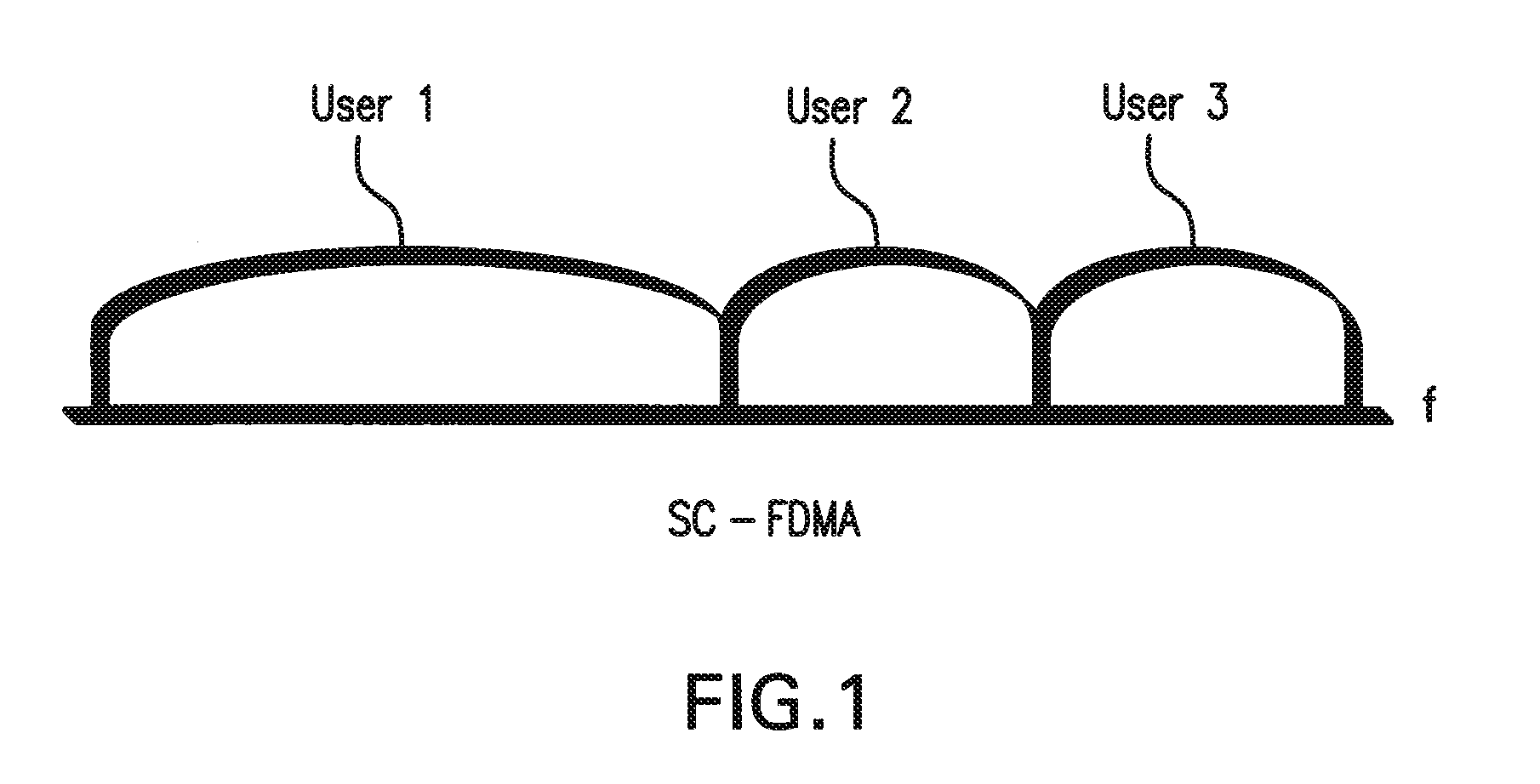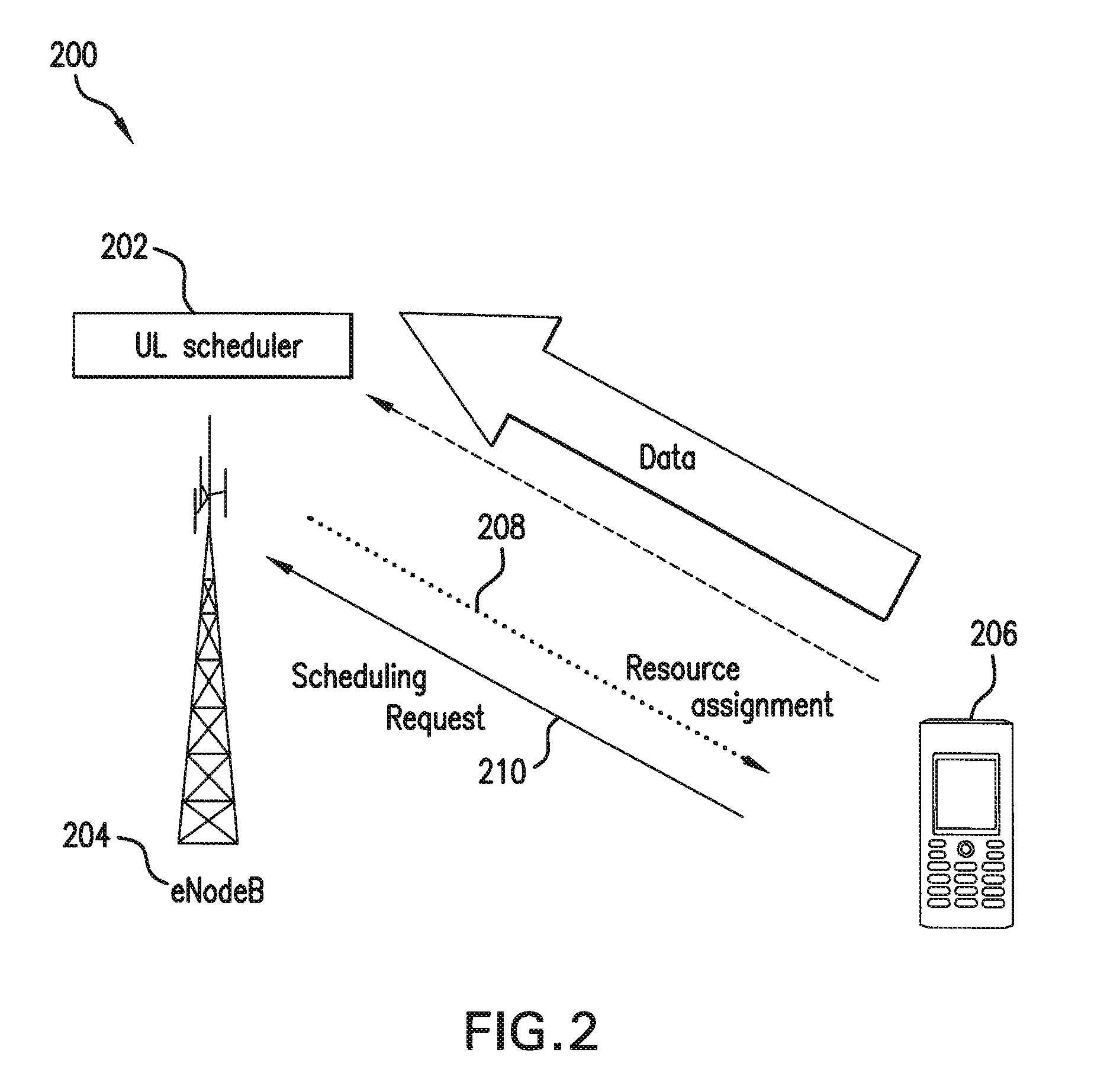Methods and systems for scheduling resources in a telecommunication system
- Summary
- Abstract
- Description
- Claims
- Application Information
AI Technical Summary
Benefits of technology
Problems solved by technology
Method used
Image
Examples
Embodiment Construction
[0034]One possible scheduling request scheme is to define an SR as being a single bit message where the single bit (i.e., the “signal request bit”) has been set to a particular predefined value (e.g., set to “1”) and to configure the UEs such that the UEs transmit an SR to the scheduler whenever: (1) the UE has data to transmit (e.g., the UE has data in a transmit buffer) and (2) the UE does not have an uplink resource allocation for transmitting the data to the eNodeB. However, a potential drawback of this approach is illustrated by the example scheduling message flow shown in FIG. 4.
[0035]The example shown in FIG. 4 assumes there are two synchronized UEs (i.e., UE1 and UE2), neither of which initially has an uplink resource allocation for data transmission. It is further assumed that the UEs have a dedicated SR channel.
[0036]As shown in FIG. 4, when data arrives in the transmit buffer of UE1, UE1 provides to the scheduler notification of this event by transmitting an SR (e.g., a “...
PUM
 Login to View More
Login to View More Abstract
Description
Claims
Application Information
 Login to View More
Login to View More - R&D
- Intellectual Property
- Life Sciences
- Materials
- Tech Scout
- Unparalleled Data Quality
- Higher Quality Content
- 60% Fewer Hallucinations
Browse by: Latest US Patents, China's latest patents, Technical Efficacy Thesaurus, Application Domain, Technology Topic, Popular Technical Reports.
© 2025 PatSnap. All rights reserved.Legal|Privacy policy|Modern Slavery Act Transparency Statement|Sitemap|About US| Contact US: help@patsnap.com



